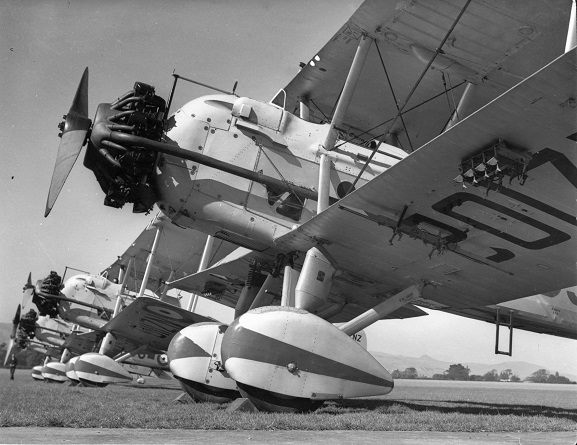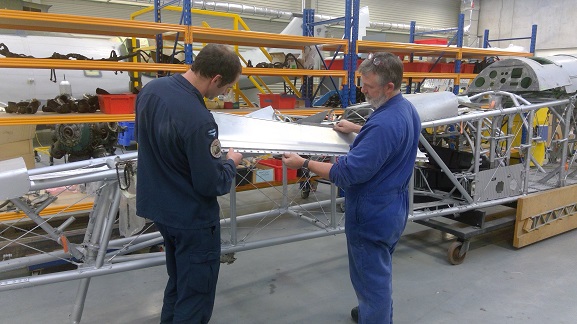Vickers Vildebeest Type 277 Mk.III
Specifications
RNZAF serial no. NZ102
Under restoration in the Conservation Workshops
Can be viewed on the Daily Tour
The Vildebeest was a very large 2-3 seat all-metal biplane, typical of those produced in Britain during the inter-war period.
The prototype first flew in 1928 and the aircraft entered service with the RAF in 1931. The first 12 brand-new Vildebeests arrived in New Zealand in 1935, supplemented with a further 27 ex-RAF aircraft in 1940-41. They served alongside 62 Vickers Vincents (a general purpose variant of the Vildebeest).
During its time with the RNZAF, the Vildebeest was used in a variety of roles including coastal defence, general reconnaissance, aircrew training and target drogue towing. Half the aircraft were written off in accidents, and by mid 1943 the remaining aircraft had begun to outlive their usefulness, and were gradually broken up for scrap.

An imposing view of NZ102 (closest) lined up with three other Vildebeests at RNZAF Wigram, circa 1938. Image: 1984/273.25b from the Max Smith collection, Air Force Museum of New Zealand.
NZ102
Manufactured at the Vickers factory in Weybridge, England, NZ102 was shipped to New Zealand in March 1935 on MV Rangitata, arriving in Auckland on 20 April and barged to Hobsonville for assembly. It served with the Bomber Reconnaissance Flight from 1937 and later with No. 2 Flying Training School at Woodbourne. In late 1940 it was transferred to No.1 (General Reconnaissance) Squadron at Whenuapai. NZ102 was eventually broken up for scrap at Ohakea on 14 June 1944. The remains ended up as scrap metal with an engineering firm in Marton, not far from Ohakea, where they remained until being recovered by volunteers from the Museum of Transport and Technology (MoTaT) in 1972.

Project Supervisor PJ Smith and Airframe Technician Cpl Tim De Roo from the Museum’s conservation team assess the present state of Vildebeest NZ102 prior to recommencing work on the aircraft.
The remains of NZ102 were acquired by the RNZAF Museum in 1986, and restoration work began in 2002, before being placed on hold due to other commitments in 2015. The rebuild was recommenced in July 2020, and it is currently the Museum’s major technical conservation project. Find out more about the restoration of NZ102 here.



